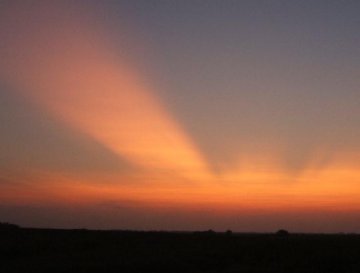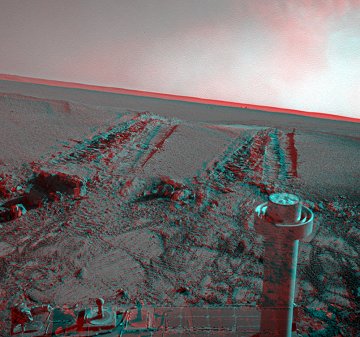| LABOR DAY BBQ: "What better time for a solar bonfire than Labor Day weekend?" asks Alan Friedman of Buffalo, New York. "I was thrilled to see this tall prominence through my solar-filtered backyard telescope. It's a very active burner showing rapid changes over 30 minutes of observing. Happy Labor Day!" more images: from Pete Lawrence of Selsey, West Sussex; from Alan Friedman of Buffalo, New York; from Erika Rix of Zanesville, Ohio VOLCANIC SUNSETS: Sky watchers across the USA and Europe are reporting unusually colorful sunsets and sunrises. The cause appears to be the August 7th eruption of the Kasatochi volcano in Alaska. The volcano hurled a massive cloud of ash and sulfur dioxide into the stratosphere; high winds have since carried the aerosols over parts of the USA and Europe, producing widespread "volcanic sunsets." "Last night, we had another beautiful sunset here in Nebraska," reports Jerry Chab of Falls City. "Long colorful sunrays appeared and disappeared, reminding me of the Northern Lights." 
Dramatic rays crossing the sky are a hallmark of volcanic sunsets, as are violet domes and red aureoles around Venus. When the sun goes down tonight, look west. You may be in for a treat. more images: from Jeffrey Berkes at the Assateague Island National Seashore, Maryland; from P-M Hedén of Vallentuna, Sweden; from Tom Soetaert of Lawrence, Kansas; from Karen Webb of Ridgecrest, California; from Scott Sparrow of Pasadena, CA; from David Smoyer of Truckee, CA; from Martin Popek of Nýdek, Czech Republic; from Kevin Jung of Ada, Michigan; from Grover Schrayer of Bethel Park, Pennsylvania; from Ron van Elst of the Netherlands ; from Adam Kraft of Jackson, Mississippi, from R.J. Waldman of Simi Valley, California; from Jan Koeman of the Netherlands; from Dick McGowan of Olathe, Kansas; from Asti Bhatt of Ithaca, New York; from Catalin M. Timosca of Turda, Romania; from Tamas Ladanyi of Lake Balaton, Hungary; OLD TRACKS: Mars rover Opportunity is leaving Victoria Crater, and it's exiting the way it came in. Put on your 3D glasses and behold the new tracks beside the old: 
Graphic artist Patrick Vantuyne created the anaglyph by combining left- and right-eye images from Opportunity's navigation camera. "Making stereo images of Mars has become almost routine for me, but it's still a thrill to see something new in 3D, which is hardly visible in a single picture," says Vantuyne. As an example, he notes the clouds in the upper-right corner of the anaglyph. Gaze for a while into the sky and watch the fluff emerge: full-size image.
August 2008 Aurora Gallery
[Science@NASA: Plasma Bullets Spark Northern Lights] | 
